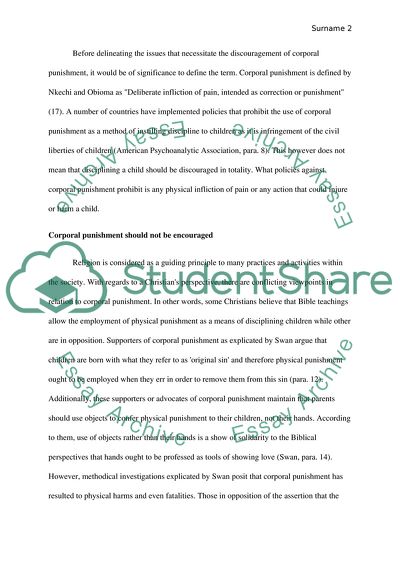Cite this document
(Corporal Punishment - Pros and Cons Literature review Example | Topics and Well Written Essays - 1750 words, n.d.)
Corporal Punishment - Pros and Cons Literature review Example | Topics and Well Written Essays - 1750 words. https://studentshare.org/education/1849915-corporal-punishment
Corporal Punishment - Pros and Cons Literature review Example | Topics and Well Written Essays - 1750 words. https://studentshare.org/education/1849915-corporal-punishment
(Corporal Punishment - Pros and Cons Literature Review Example | Topics and Well Written Essays - 1750 Words)
Corporal Punishment - Pros and Cons Literature Review Example | Topics and Well Written Essays - 1750 Words. https://studentshare.org/education/1849915-corporal-punishment.
Corporal Punishment - Pros and Cons Literature Review Example | Topics and Well Written Essays - 1750 Words. https://studentshare.org/education/1849915-corporal-punishment.
“Corporal Punishment - Pros and Cons Literature Review Example | Topics and Well Written Essays - 1750 Words”. https://studentshare.org/education/1849915-corporal-punishment.


